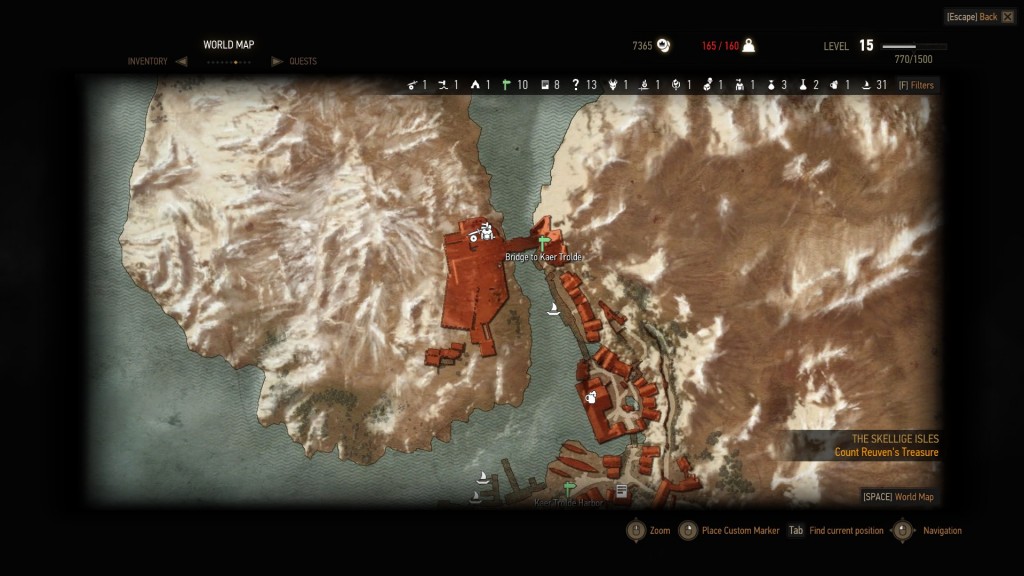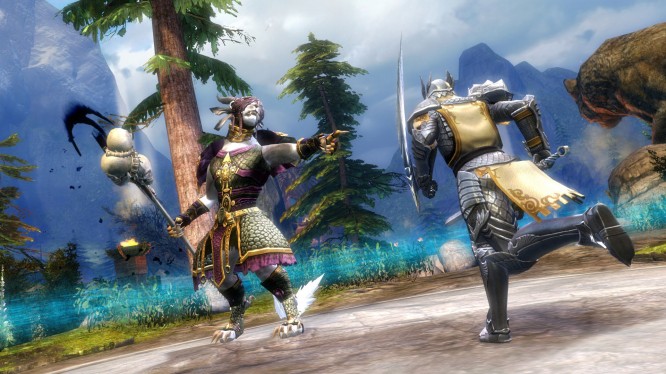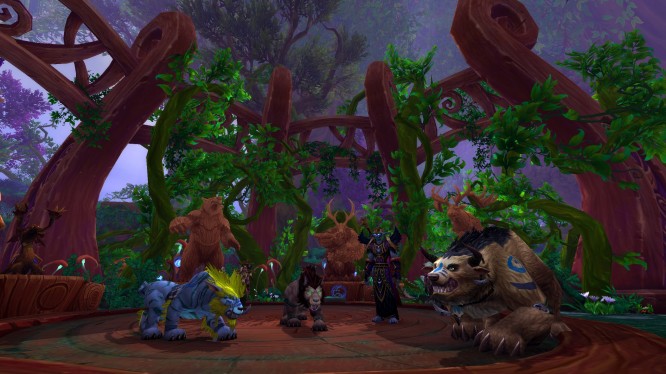

To understand why there aren’t many MMORTS games today, we have to take a look at the genre’s long history. The Real Time Strategy genre has been around ever since graphical interfaces were developed for computers. It seemed nearly every company in the 80’s and 90’s had at least one real-time strategy game in their repertoire. Many of these games were successful, but the genre really kicked off when Bullfrog released Populous in 1989, a game that is still referenced even today. From there we bounced around games like Dune, Command and Conquer, Total Annihilation and even a little game called Warcraft.
Times were beginning to change, and the industry needed to adapt. If one were to play Populous today, they would consider it clunky and messy. These old games were intended to be played by a specific group of people. In fact, it was probably the only group of people that bothered playing games at all. The stereotype of the “geeky kid” that were interested in this passing fad called “computers” was not seen that way to game developers, but rather viewed as their main target audience. They encompassed the majority of the market, and as such were provided games catering to their interests.

Can you tell what’s going on in this shot?
The RTS genre began to become polished as video gaming became more widespread. Titles like Warcraft 2, Age of Empires and StarCraft take things slower, but are also far more detailed than its predecessors. The games were no longer “exclusive” to brainy war-generals in training, but were now open to anyone. Though the first age of RTS was over, the genre was far from dead.

AoE was fairly accurate when it came to capturing the looks and feel of Ancient Greece
Then Warcraft 3 happened, and suddenly the RTS genre died. Stories like this don’t happen often, where one game becomes so successful that it embodies the genre as a whole, damaging and even killing any competition. RTS games were still developed, but none could take away the massive fan base created by Warcraft 3 and StarCraft. Yes, Warcraft 3 was beautifully sculpted and vibrantly colorful, but that alone couldn’t have made it the behemoth it became. So what happened? Three words. Use Map Settings.
Warcraft 3 and StarCraft both had online play, but they also came with something most RTS games did not. A highly-customizable map editor. With this tool, people could create their very own maps to play on, but they could do so much more. Most maps in the campaign were simple “gather resources, build base, train army, destroy enemy” matches, but sometimes they were clever and creative. Maybe they tossed you a handful of units and had you crawl through a dungeon, or provided you with plenty of resources as you hold out against mass waves of enemies. The map editor pushed these new types of gameplay to the limit, opening the door to whole new takes on the RTS genre. Some maps I personally recall are:
Uther Party, a collection of minigames set up similarly to Mario Party.
Black Road RPG, a game where each
player controls 1 hero as they level up and adventure through the massive map provided to them.
Tree Tag, a game where you play either as a tree and have to survive in the dense jungle, or a fire golem bent on destroying all players.
Legion TD, just one of the main genre-defining Tower Defense games
And of course, a little game known as Defense of the Ancients. DotA.
This is where we segue into the modern era. Warcraft 3 continued becoming popular, but a unique thing was happening. People weren’t playing Warcraft 3 for Warcraft 3, they were playing it for DotA. The popularity of this custom game was (and still is) beyond reason. Café shops in Singapore would have DotA play non-stop. Professional teams were created, along with tournaments with large cash prizes. There was even a song created about DotA by the musician Basshunter.

There were, in fact, Warcraft games that came before World of Warcraft.
Like most RTS games, Warcraft 3 had online play, but DotA was the start of the MMORTS revolution. What made DotA different was that the game wasn’t over just because the match was won. Your status and your name carried over into the community, and it is that aspect which what makes an MMO “massively”. So, if a dinky fan-made custom map for a game with no proper structure could be considered an MMORTS, what would happen if that essence was plunked away and put into a uniform game?
Say hello to League of Legends, the first true descendant of DotA. Though the game Demigod came out first, League provided a true MMO feeling. The results of matches mattered, with players actually being rewarded for their efforts. Those rewards, which come in the form of Influence Points, can then be spent towards bonuses that improve your chance at winning. This was the first time any RTS game has ever done something like that. Suddenly, YOU are the main character, not the units you control. You don’t level up your units (well, you do), you level up yourself.

Some oddly named players try to push down a tower, just one part in winning a game
Many games followed in Leagues’ path. Most were unsuccessful. It has been shown that when an RTS gains immense popularity, it is very hard to remove fans from it. The only game to actually defeat League of Legends happens to be the actual successor to DotA, and that is Dota 2.
Dota 2 goes back to its routes, providing an updated version of what it considers to be its prequel. Besides having better interface and graphics, not much else was changed, except now it was its own standalone title. Unlike League however, Dota 2 is entirely free to play where the only paid aspects come in the form of cosmetics.

Heated team fight in Dota 2
When I talk about popularity, I am talking about huge fanbases. More than 7 million unique players logged onto Dota last month. The sheer size and popularity almost destroys any attempt new MMORTS games have of competing with two titans. How can any company manage to compete with these two? League maintains its status due to it being the first on the scene, having gathered a large fanbase with its basic free to play methodology with paid extras. Dota 2 on the other hand, is entirely free with Valve earning funds through customized equipment created and bought by players of the game.
Let us look at three stories of other attempts at MMORTS. First in line is Heroes of Newerth. This game came out shortly after League, but before Dota 2. While League took a new approach to DotA by using new heroes, items and even a map, HoN at the start was very much an exact replica of DotA. They made two dire mistakes which removed its status as a competitor to League. First is that just like Demigod, HoN required a flat initial payment to play, while anyone could download League of Legends and play instantly. Next, HoN was at first an exact clone of DotA. So when Dota 2 came along offering more incentives for free, HoN had to scramble to maintain its status. They still exist today and have since added numerous heroes not seen in DotA or Dota 2.
Next, we take a stroll in the cemetery where we find a personal favorite of mine, Land of Chaos Online. This MMORTS was quite different. Inside of playing with an aerial view like most RTS games, this one played like a third person RPG. All RTS aspects were still there, even more so than Dota 2. Players could create units for their teams and upgrade towers using gold obtained in the match at hand. After the game ended, players could even use their rewards to buy permanent bonuses to their favorite heroes. This game’s death perhaps defines why MMO and RTS are two words that are hard to mix. The MMO aspect is what brought it to life and what killed it. All the influences of cash shop bonuses and gold grinding, coupled with the usual lack of awareness most Korean free to play games offer created a violent concoction of imbalance between the haves and the have nots.
Finally, we reach a game that goes way back when RTS games were mostly about buildings and armies. Age of Empires Online. It was seen as a revival of the series, one that was always loved by players. The new incarnation implemented RPG aspects, such as obtaining items that give permanent boosts to your soldiers that carry over between matches. People expected Age of Empires to be an RTS game, not an MMO. Just like Land of Chaos, it was the MMO aspects that killed the game. Cash shop items provided a clear advantage to those with deep pockets, and eventually the player base dwindled. As of now, the game is scheduled to be taken down permanently on July 1, 2014.
We started this journey with one question. “Why aren’t there many MMORTS games?” Now you see that the answer is simple. People don’t want them. Horrible things happen when the two mix. The two exceptions I listed, Dota 2 and League of Legends, provide minimal aspects of both MMO and RTS parts. So little, that neither Valve nor Riot, the two developers, would consider their game to be labeled as such.
Like this article? Check out our top 5 memorable moments in MMO History!
Or check out what one of our writers would like to see in future DLC for Titanfall!




 Beta Data: October 9, 2015 .
Beta Data: October 9, 2015 . Tyrian Chronicle: Is sPVP Ready for eSports? .
Tyrian Chronicle: Is sPVP Ready for eSports? . E3 2015: Nod and Manus Virtual Reality Controls .
E3 2015: Nod and Manus Virtual Reality Controls . MMOs Can Teach Us How to be Better Human Beings .
MMOs Can Teach Us How to be Better Human Beings . BlizzCon 2015: Community Ampitheater Legion Systems Q & A .
BlizzCon 2015: Community Ampitheater Legion Systems Q & A .